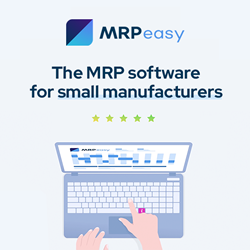Chromatic Announces Breakthrough Smooth-Mode Technology for Ultra-Smooth 3D-Printed Rubber Parts
We have developed a way to easily and cost-effectively 3D print products that are ultra-smooth without additional steps.
Chromatic 3D Materials, a 3D-printing technology provider, has developed breakthrough Smooth-Mode technology for 3D printing of durable rubber parts with ultra-smooth surfaces at commercial volumes. Now, industrial manufacturers can 3D print smooth, high-quality polyurethane parts, such as seals, gaskets, grommets, bladders and other elastomeric products, with no post processing or surface finishing.
"Sealing requires a smooth surface, but 3D-printed parts have always had layer lines or roughness. We have developed a way to easily and cost-effectively 3D print products that are ultra-smooth without additional steps. It's a breakthrough for 3D printing those professional applications that must be airtight and watertight," said Dr. Cora Leibig, Chromatic CEO and founder.
Parts printed with Smooth-Mode technology have superior aesthetics as well as finer dimensional accuracy. For example, products can be printed with precise uniform thickness at submillimeter scale. Thus, the new technology is suitable for manufacturing rubber bladders and other elastomeric products that expand and contract.
Chromatic's team of additive manufacturing experts first achieved ultra-smooth prints by fine-tuning the viscosity and surface tension of the company's printable thermoset polyurethane materials. "We developed a way to go beyond simply applying our reaction technology to FDM printing. Smooth-Mode uses chemistry to create an ultra-bonded and smooth part. We believe this printing technique delivers the world's smoothest printing along the Z, or height, axis," explained Dr. Bart Engendahl, Chromatic's managing director in Germany.
Industrial manufacturers can take advantage of Smooth-Mode with Chromatic's RX-AM™ materials and technology platform. A 3-in-1 platform, RX-AM™ includes materials, software and hardware for deposition printing with reactive chemistry. RX-AM™, or Reactive Extrusion Additive Manufacturing, uses printable polyurethanes with Shore A hardness ranging from 50 to 90 as well as custom grades with varying colors, hardnesses and special properties (e.g. antibacterial, static discharge, biocides, etcetera). The platform is designed for printing commercial volumes.
About Chromatic 3D Materials
Chromatic 3D Materials is a 3D-printing technology company focused on more flexible, cost-effective and sustainable manufacturing of industrial-strength elastomeric products. Its portfolio includes printable polyurethanes and other thermoset elastomers for applications in transportation, industrial seals and gaskets, textiles, medical devices and defense. Chromatic's RX-AM™ materials and technology platform is based on Reactive Extrusion Additive Manufacturing, a type of deposition 3D printing that uses chemical reactions. Founded in 2016 by CEO Dr. Cora Leibig, Chromatic now has facilities in the US and Germany. The company serves more than 50 customers and development partners globally. Visit c3dm.com to learn more.
Featured Product

MRPeasy - ERP for Small Manufacturers That Delivers Results
Always know what you have in stock and what you'll need to fulfill orders. Never forget to order parts on time or fail to notice a late delivery from your vendor. Easily create manufacturing orders and schedule them automatically according to resource availability or delivery deadline. Generate accurate cost and lead time estimates and provide customers with quick quotes. Receive notifications when orders are late or inventory levels reach a critical point. Ensure seamless communication between sales, production, warehousing, procurement, administration, and finance. Integrate with popular accounting, CRM, and e-commerce apps. MRPeasy is an ERP software for small manufacturers that gives you all that and more. Our users report a 54% average improvement in the overall performance of their business and a 42% increase in on-time deliveries. Try for free, no credit card needed.
